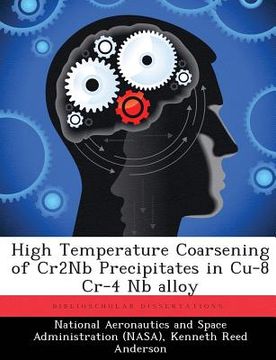Share
High Temperature Coarsening of Cr2Nb Precipitates in Cu-8 Cr-4 Nb alloy (in English)
National Aeronautics and Space Administr
(Author)
·
Kenneth Reed Anderson
(Author)
·
Biblioscholar
· Paperback
High Temperature Coarsening of Cr2Nb Precipitates in Cu-8 Cr-4 Nb alloy (in English) - National Aeronautics and Space Administr ; Anderson, Kenneth Reed
$ 48.80
$ 57.95
You save: $ 9.15
Choose the list to add your product or create one New List
✓ Product added successfully to the Wishlist.
Go to My WishlistsIt will be shipped from our warehouse between
Tuesday, June 25 and
Wednesday, June 26.
You will receive it anywhere in United States between 1 and 3 business days after shipment.
Synopsis "High Temperature Coarsening of Cr2Nb Precipitates in Cu-8 Cr-4 Nb alloy (in English)"
A new high-temperature-strength, high-conductivity Cu-Cr-Nb alloy with a CrNb ratio of 2:1 was developed to achieve improved performance and durability. The Cu-8 Cr4 Nb alloy studied has demonstrated remarkable thermal and microstructural stability after long exposures at temperatures up to 0.98 T(sub m). This stability was mainly attributed to the slow coarsening kinetics of the Cr2Nb precipitates present in the alloy. At all temperatures, the microstructure consists of a bimodal and sometimes trimodal distribution of strengthening Cr2Nb precipitates, depending on precipitation condition, i.e. from liquid or solid solution, and cooling rates. These precipitates remain in the same size range, i.e. large precipitates of approximately I pm, and small precipitates less dm 300 nm, and effectively pin the grain boundaries thus retaining a fine grain size of 2.7 micro-m after 100 h at 1323 K. (A relatively small number of Cr-rich and Nb-rich particles were also present.) This grain boundary pinning and sluggish coarsening of Cr2Nb particles explain the retention of good mechanical properties after prolonged holding at very high temperatures, e.g., 75% of the original hardness after aging for 100 h at 1273 K. Application of LSW-based coarsening models indicated that the coarsening kinetics of the large precipitates are most likely governed by grain boundary diffsion and, to a lesser extent, volume diffusion mechanisms.
- 0% (0)
- 0% (0)
- 0% (0)
- 0% (0)
- 0% (0)
All books in our catalog are Original.
The book is written in English.
The binding of this edition is Paperback.
✓ Producto agregado correctamente al carro, Ir a Pagar.

